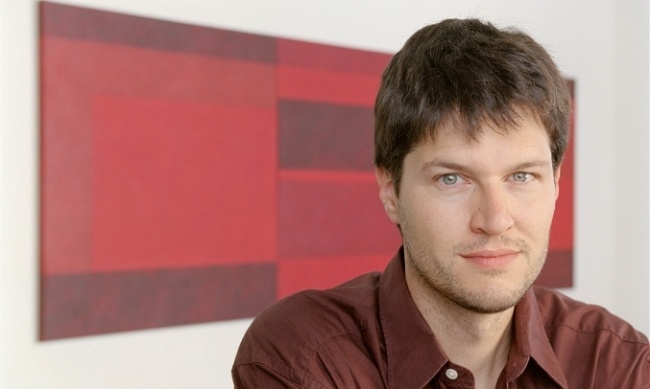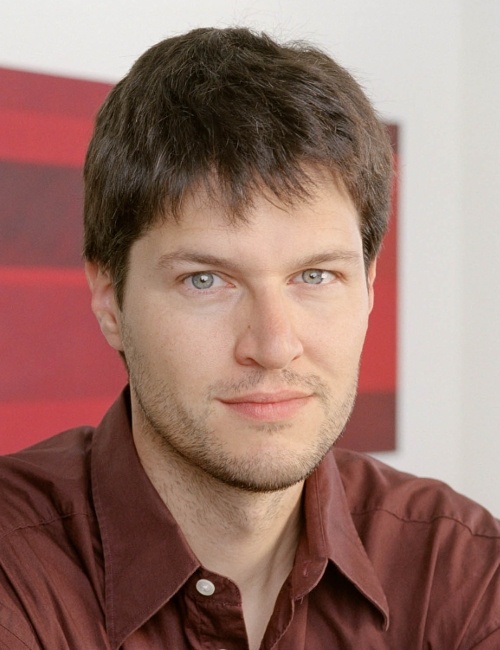.
Humanoids is a publisher with long roots in the U.S., beginning as licensor of the very influential Heavy Metal back in the 70s. These days, it’s the only BD publisher operating directly in the U.S., and the publisher with the longest track record here. ICv2 recently spoke with Humanoids Publisher Fabrice Giger as part of our BD Week event. In Part 1 of this three-part interview, we learn more about the company’s history, Giger’s evaluation of American and French markets, and the audience for BD. In Part 2, we talked about Humanoids strongest backlist and upcoming release titles, and programs to help retailers with ordering Humanoids titles. And in Part 3, we talked about the movie pipeline based on Humanoids titles, and the BD creative process.ICv2: Tell us a little bit about how you came to be involved with Humanoids and launched the U.S. company.
That was something like 1988. I was 23 and fascinated with comics and willing to develop stories and content. I purchased the company from the Hachette group and turned it into something that would be a more international company than what it was before.
I went to the Comic-Con in San Diego (it was maybe 1996) with a few boxes full of our French books and just sat in my booth with one person and wanted to see what the people would say there.
I got many artists and writers coming to the booth. I remember, for instance, Will Eisner stopping by and telling me that he would have loved to have such a publisher in the U.S. when he was younger. Those are good memories. These guys were our first clients back then, followed by directors, production designers, screenwriters and our first fans. They were the reason we decided to create the U.S. branch and opened an office in LA in 1998.
Was there an interruption in publishing between then and now in the U.S.?
Yes, a few, because we were looking for the formula to publish European comics in English and adapt them to the market. We tried a different ways to bring our content to an American Audience before we got to where we are now. Our first attempt was to publish the book the way it is published in Europe, meaning in a large format, 50 pages per album, and it didn't work in the sense that we were only able to sell a few hundred copies per title. It wasn't enough.
We tried different ways to bring this content to the American audience. Around mid-2008, we resumed publishing our books in the U.S. and decided to go with a specific format starting with an enlarged format for the material, for the fans, then to publish a version a bit smaller, which is close to the U.S. standard. Then it started to work.
That has changed a lot since then. Yes, we had maybe three or four different approaches between our start at the end of the 90s and the last incarnation in 2008, including one with DC Comics. We partnered with DC Comics to publish a few dozen titles. That was between 2002 and 2004 (see "DC Goes 'Euro'"). It was OK, but not the success we were looking for.
I also think that since we started in 1998, the timing started to be good for us, the market evolved; it evolved a lot. When we started at the end of the 90s, graphic novels were something a bit difficult to carry in a bookstore. I remember having this conversation with many bookstores, including comic book stores, who were bit reluctant to carry our content.
That change in the market is something we’d like to explore a little bit. What's your assessment of the U.S. market for BD now?
I think that it has changed a lot. I don't know to what degree Humanoids has been part of this change. Bookstores and comic book stores have told me that they started to reluctantly carry some of our books some 10 - 20 years ago. But the ones who tried realized it sells. As soon as you discover that a very strange book like The Incal sells, and you can restock and you sell it again, and you sell it again, then they started to realize that there is a possibility for this content from Europe to be successful in the U.S.
Then we started to do a bit more. We started to develop original content with U.S. artists or writers and European talents and pair them together. That's where titles such as I Am Legion by John Cassaday and Fabien Nury (see "'I Am Legion' Optioned") or more recently Redhand, developed with Kurt Busiek, came from. They were also some of the books that helped crack the market and to show to readers that this is not a 100 percent European comic. It's not a 100 percent U.S. comic. It's something new and a new way to tell stories.
That was also one of the reasons, I think, for our success. Another reason was that we had many, many books from the original catalogs that were very well‑known almost everywhere in the world. So I think to a certain degree when we started to bring these books to the American market, they were already known to the core fans. It helped too.
The Incal is a good example of this, or The Metabarons. Yes, the market, now it is very, very different. We can see that.
Every quarter, we sell more of our bestsellers and our backlist titles. It's definitely increasing which is a good sign for us, especially when you see that in Europe, the market in generail is not growing the same way.
Interesting. What is the market like in France (or in French‑speaking countries in Europe) and how is it different from the United States?
It's completely different. You can't really compare.. Of course, if you need to find American comics in France you can, but the market share of U.S. comic books in Europe is very small.
Even the standards are different. The way you sell comics, the way you distribute comics, the way you develop comics in Europe has nothing to do with what you do in the U.S.
To give you some indication about how the market is today in France, I can give you the following information. In 2000, we had about 2,000 new titles per year. Now it's more than 5,000, and the market is still the same size.
I think it's a very good picture of what's happening. If you produce more in the market that’s stable in the sense that it doesn't decrease but it doesn't increase at the same time, then the more you produce, the more you create an issue. So that's exactly what we are encountering in France now.
One of the decisions we made a few years ago was to publish less titles than before in order to be more efficient at releasing the titles we develop, and also in order to not take part in this thing which created a problem.
I see no changes. I think we are probably one of the only publishers who has decided to reduce the amount of titles published every year.
When we talk to people that sell comics in Europe and people that sell comics in the United States, the attitude toward the audience is very different. When we ask people in Europe, "What audience is this comic for?"
They'd say, "Everyone."
Here in the States it would be, "Well, it's males from 18 to 34, or kids 10-14." They'd give a segment.
Wondering what your thoughts are on the differences in the makeup of the audience there and the makeup of the audience here and if there are any lessons there about where the opportunities are here.
Here in the U.S., we don’t know precisely who our readers are. We also don't know which retailers in the direct market sell our books the most. It sounds strange, but this is one of the peculiarities of the U.S. direct market, to not provide the publisher with that information. In France, I know very precisely what I sell to which store on a daily basis. I can tell, in real time, "Today I've sold 15 copies of this title to this store in that city at that address."
This is impossible in the U.S. Why? Because that's information that isn't provided by the distributor (I'm talking about the direct market distributor). It's different with the book market distributor.
The simple fact that I don’t have access to this information in the U.S. makes it difficult to understand very precisely who we get. Our readers are not, and definitely not, the typical readers of comic books in the U.S.
I think our audience in the U.S. is closer to the European audience, meaning the probability that the person reading our books is a female is higher than for an average U.S. comic book. Of course, all this is based on assumptions, some feedback, some research we have done but also our assumptions.
We are definitely not exactly the same type of readers as the average comic book publisher in the U.S., definitely not.
To answer your question about Europe, and France in particular, yes, the demographic is a bit wider. Yes, the female percentage of our readers is higher than most in the U.S., but it's still far from what we would find in Japan, for example, where reading manga in Japan is something that is demographically divided for each different group.
As far as the three very different markets [Europe, Japan, and the U.S.], probably the narrowestreadership os far is in is the U.S., but that is evolving.
In France, it's probably very similar to what you have in Germany and Spain and Italy. There's a majority of males, but with an important percentage of females. And 15 - 25 years old is the main target for almost all publishers now in France.
Of course, it's very different than what you can find in the U.S. or in Japan.
In terms of volume‑‑do you sell more in the book channel or in the comic store channel?
We are pretty new to the bookstore market since we've started, a little over a year ago, distributing our books through Ingram. I see an increase in our sales every week.
For the moment, for us it's still higher in the direct market since many comic book stores have space dedicated to our books. But I think that we'll very, very soon be close to half and half.
Click here for Part 2.




